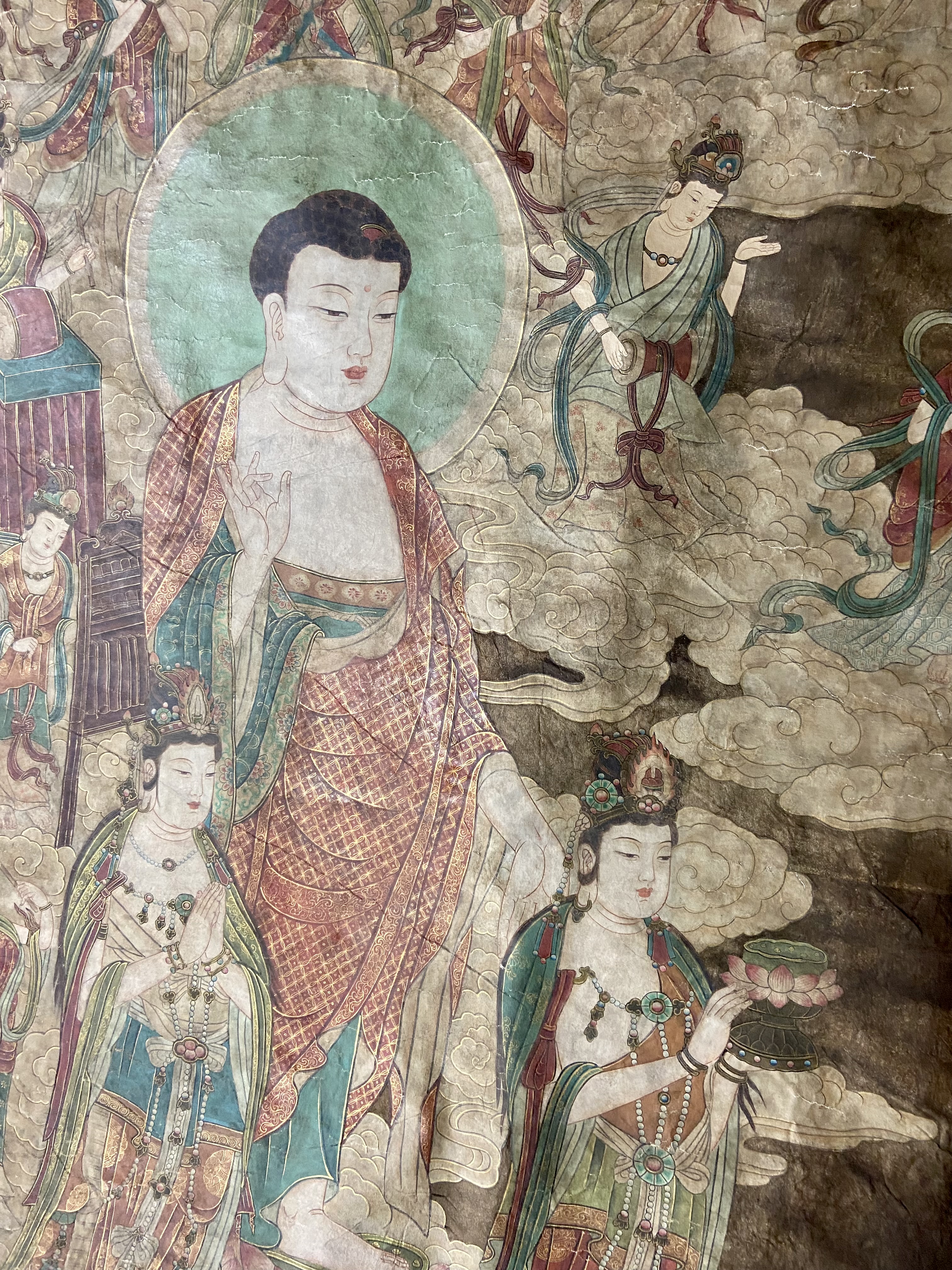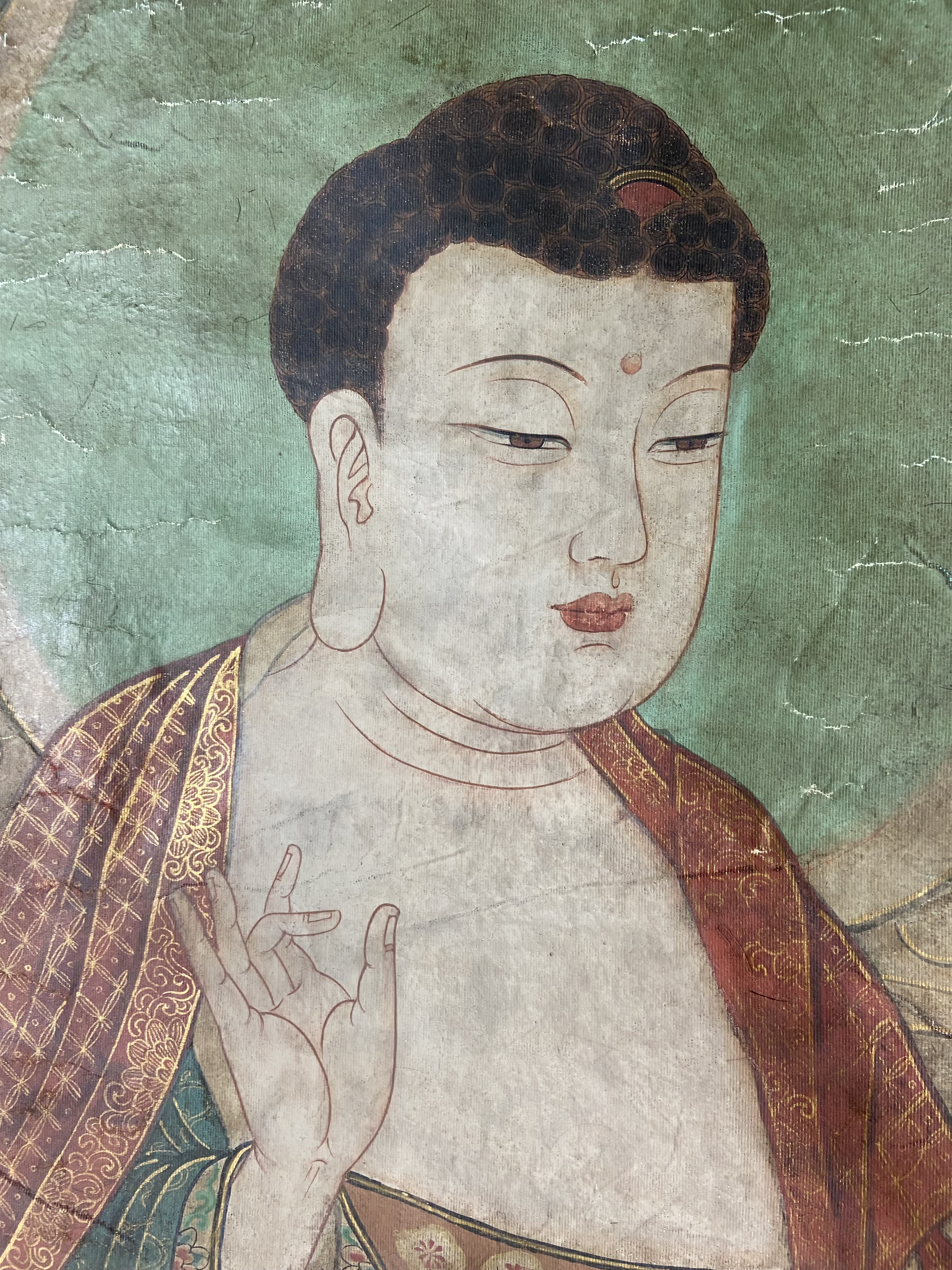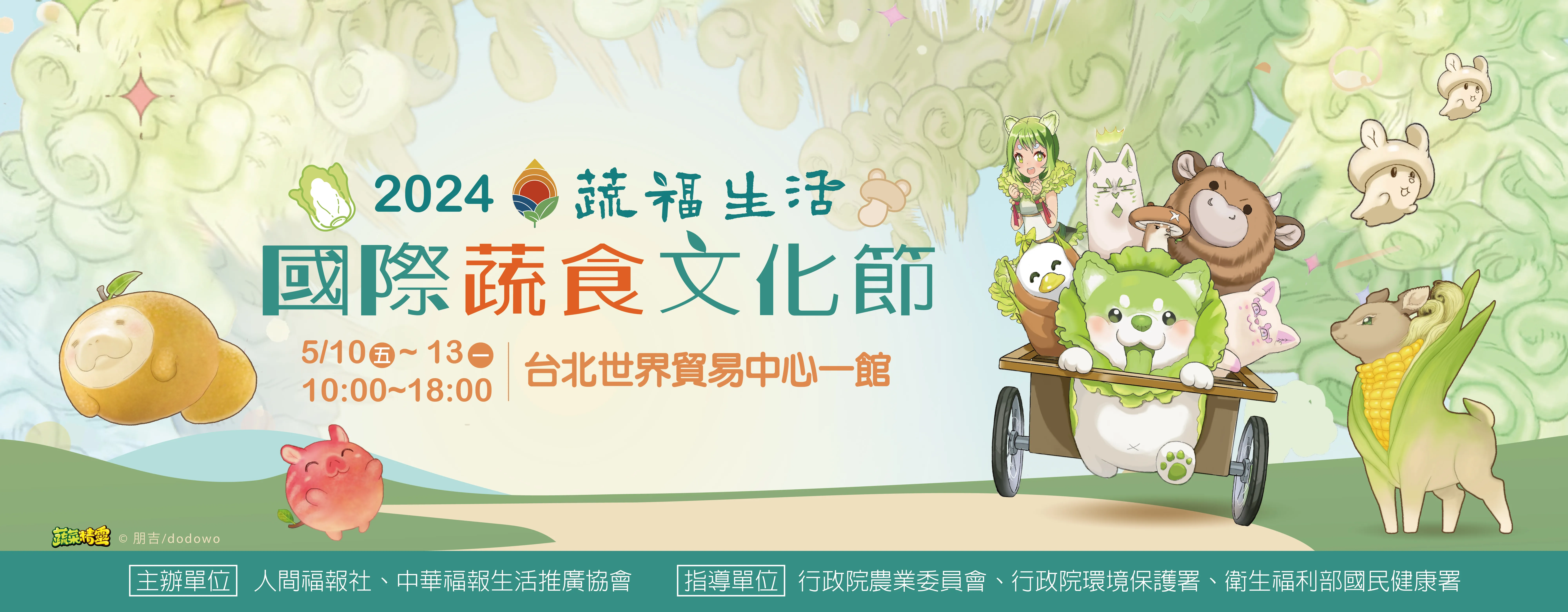
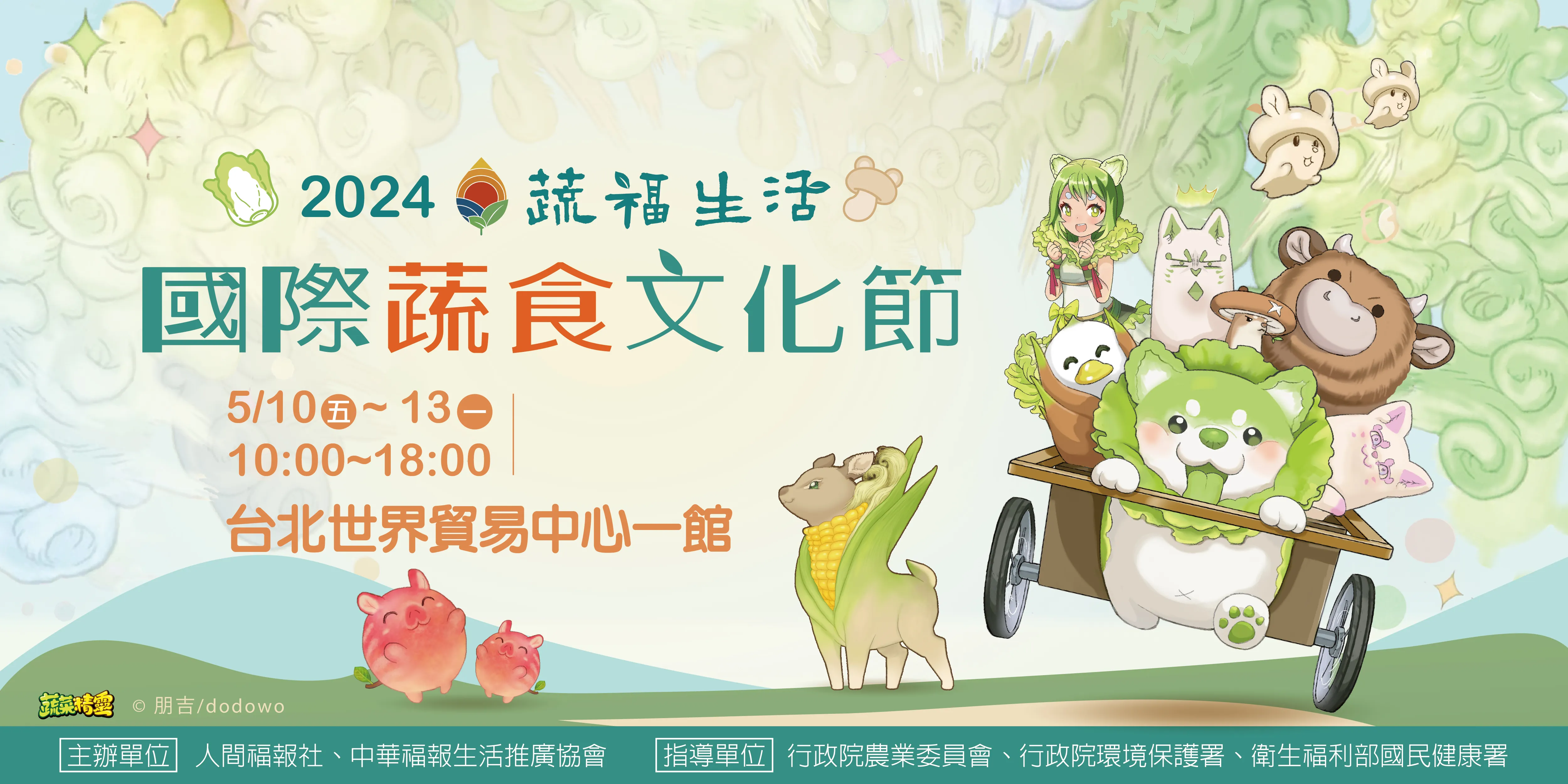
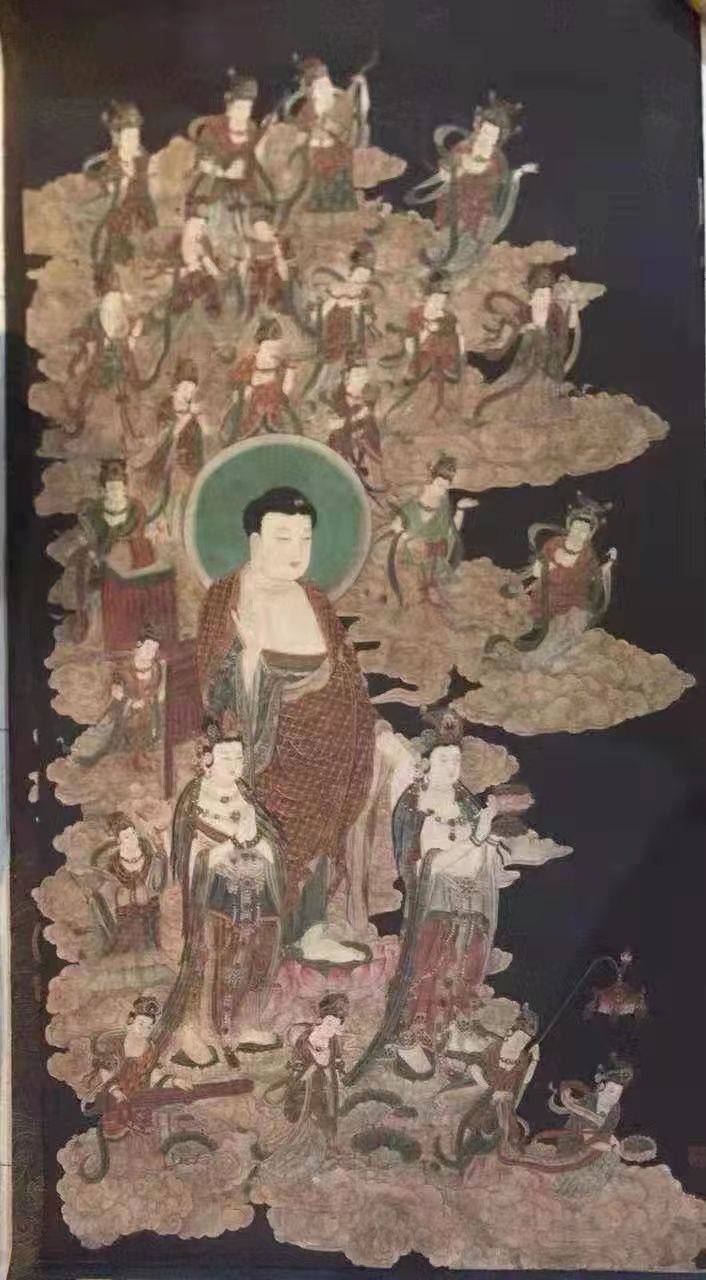
| 時代: | 15世紀至16世紀初 |
| 出土地點: | 傳世品 |
| 尺寸: | 長度:約300 cm 寬度:約160 cm |
| 質地: | 工筆礦物彩布質壁畫 |
| 數量: | 1 |
此幅壁畫使用藏畫法,顏料是用標準明朝中後期的天然礦物彩料,呈色依然鮮豔,但有明顯年代久遠風化現象。畫工繁複細緻,與法海寺內壁畫之畫工如出一轍,釋迦牟尼佛和菩薩的神態姿勢、衣著紋飾,以及背景捲雲畫法,整體畫風、畫法和布局方式相同。
This mural utilizes a technique called "canghua" or hidden painting method.The pigments used are standard natural mineral colors from the middle to late Ming Dynasty, which still exhibit vibrant hues but show distinct signs of age-related weathering. The painting technique is intricate and detailed, akin to the murals inside the Fahai Temple. The expressions, postures, attire, and the scroll-cloud technique in the background of Shakyamuni Buddha and the bodhisattvas are consistent in style, technique, and composition with those found in the temple's murals.
此幅畫主體的釋迦牟尼佛位於左側中央,眼瞼低垂呈思考狀、眉心中央有白毫,頭部比例較大,身形沉穩端正,上半身面積較大,著有披肩式的紅色僧衣,衣著蔽體不露,在寬大袖口自手肘才大幅散開,胸口交領低而寬,露出裙頭的結飾,衣著邊緣有華麗的花式圖樣環繞,有標準明朝中後期捲葉紋,衣著紋飾是描金菱格紋,釋迦牟尼佛右手向上,拇指、中指相捻結說法印,左手向下、掌心朝前施與願印,赤足立於粉色蓮座上。
The central figure of this painting, Shakyamuni Buddha, is situated in the middle left. His eyelids are lowered as if in contemplation, with a white curl in the center of his forehead. The proportions of the head are slightly larger, and the overall demeanor is composed and upright. The upper body is larger in proportion, and he wears a red monastic robe that drapes over his shoulders. The robe covers his body and only opens significantly at the wide sleeve cuffs below the elbows. The neckline is low and broad, revealing the decorative knot at the hem of the robe. Elaborate floral patterns adorn the edges of the attire, featuring the standard "juanyewen" motif from the middle to late Ming Dynasty. The pattern on the robe is a golden lattice design. Shakyamuni Buddha's right hand forms the "abhaya mudra" or gesture of fearlessness, while his left hand faces downward in the "varada mudra" or gesture of giving. He stands barefoot on a pink lotus seat.
釋迦牟尼佛兩側有雙手捧蓮花缽的普賢菩薩,以及雙手合十的文殊菩薩,眾樂技菩薩演奏多樣樂器,有古琴、腰鼓、編鐘、鼓、排笛、笛、簫、鈸、琵琶和中阮等樂器,也有樂技菩薩隨音律手舞足蹈,呈現歌舞昇平的妙樂聖境。華嚴三聖及眾樂技菩薩衣著皆華麗細緻,和法海寺內壁畫之畫風、畫工一致,應是明朝中後期宮廷畫家所繪製。
Flanking Shakyamuni Buddha are the bodhisattvas Manjusri and Samantabhadra, with Manjusri holding a lotus-flower bowl and Samantabhadra making a gesture of prayer. Various bodhisattvas playing musical instruments surround them, including instruments like the guqin, waist drum, bell chime, drum, flute, panpipe, xiao flute, cymbals, pipa, and zhongruan. Some bodhisattvas also dance in accordance with the rhythm of the music, creating a joyful and harmonious sacred atmosphere. The attire of the Three Saints and the musical bodhisattvas is splendid and detailed, in line with the style of the murals within the Fahai Temple. It's likely that these were painted by court artists during the middle to late Ming Dynasty.
